The biggest aircraft built in WWII is the H4 Spruce Goose and the heaviest is th B&V 238. correct me if im wrong.
dont want to be the bad guy here but for your info the biggest plane of ww2 was a soviet plane but it wasnt used in war the same goes for the german big plane dorneer and something dont remember the model
And in wich post I said it was the bigger ? :roll:

Biggest and heaviest AEROPLANES. If you’re being awkward you can point out that Airships are also aircraft, and they are much bigger and heavier than any aeroplane of WW2. The Graf Zeppelin had it’s last flight 12 days before WW2 started, but was broken up in 1940 so is marginal for consideration. The Goodyear K-class blimps were certainly used in WW2, and at 260ft long is somewhat larger than even the Huges Hercules (Spruce Goose). Weight is likely to be lower though…
I see… Thanks!
Blomh & Voss Bv-222, Images of the mock-up civilian variant, it would transport 80 people with full luxuries. Never made it to series production.



Wen we tolk about ww2 we always thinck about the german army , the SS ,the tiger tank , the stucka dive bomber , and the moust tretning is the german bombers…My personely favorit is He 111 and the Ju 88…I think that this airplanes chenged the face of the war …The invazion of britan the invazion of poland and france…and not the last U.R.S.S. …All my respect is for the german air superioriti and military strategi and inteligence…they whose the moust graitest army in the warld …and if they didn’t had so enemy’s they wood had won this war…But lest’s tock obout the bombers , Germany had the moust graitest engeners and inventor…is to bad dat they diden’t treat them like the americans tret theyer invenors and syentist…
Wen we tolk about ww2 we always thinck about the german army , the SS ,the tiger tank , the stucka dive bomber , and the moust tretning is the german bombers…My personely favorit is He 111 and the Ju 88…I think that this airplanes chenged the face of the war …The invazion of britan the invazion of poland and france…and not the last U.R.S.S. …All my respect is for the german air superioriti and military strategi and inteligence…they whose the moust graitest army in the warld …and if they didn’t had so enemy’s they wood had won this war…But lest’s tock obout the bombers , Germany had the moust graitest engeners and inventor…is to bad dat they diden’t treat them like the americans tret theyer invenors and syentist…
Don’t know about you, but I don’t particularly think of any one army when thinking about WW2. And I’ve never particularly been impressed by the German bombers in particular - poor performance and lack of growth potential.
As for the Germans having the greatest scientists and inventors - that’s a good laugh. They weren’t any better than the Allies, and failed badly when it came to introducing ideas into service as well worked-out productionised designs.
That used to be Ju-52… But it was shot down while carrying Gedrman parashootists to Ardens…
27 Dec 1944…
http://forum.exler.ru/arc/uploads/127/post-1165610608.jpg

Nasty pics,
is the Ju-52 a “heavy”??.. I dont think so
Do not be sooooo critical towards me… 
Anyway it is heavier than water…
Arado 232 tausendfüssel
The Ar.232 was a uniquely styled transport aircraft. The first prototype flew in 1941 powered by two 1,192kW BMW 801MA radial engines. It is believed that only 18 to 20 further aircraft were built as Ar.232As or B-0s and Ar.232Bs, most of which were powered by four 894kW BMW Bramo 323R-2 radials and carried a crew of four and about 4,500kg of cargo (including vehicles).
Ar.232s, including the prototypes, served with the Luftwaffe from 1942 until 1944. A unique feature of the design was its landing gear: a retractable main nosewheel type gear and a secondary gear of ten pairs of smaller wheels on shorter legs situated under the fuselage.
The latter were normally off the ground but took the weight of the aircraft during loading and unloading when the main undercarriage legs were reduced in length to facilitate cargo handling.

Oooh, a scaryplane I haven’t seen before! Thanks PK!
You dont ?, well is not that rare.
reminds me of Thunderbird #2

And now, honorable Ladies an Gentlemen, after that excellent presentation of one and only Arado Ar 232 Tazelwurm, something more about one truly gargantuan German airplane – machine which established completely new standards within boundaries of the military airborne transportation capacities, a little tribute regarding one frequently ridiculed, but in the very same time conceptually highly innovative machine that successfully introduced concept of strategic air-lift, conceptionaly very advanced machine with capacious fuselage and nose doors that was ahead of other nations’ transport aircrafts – something about Me 323 Gigant- the biggest land-based transport airplane during the WW2.
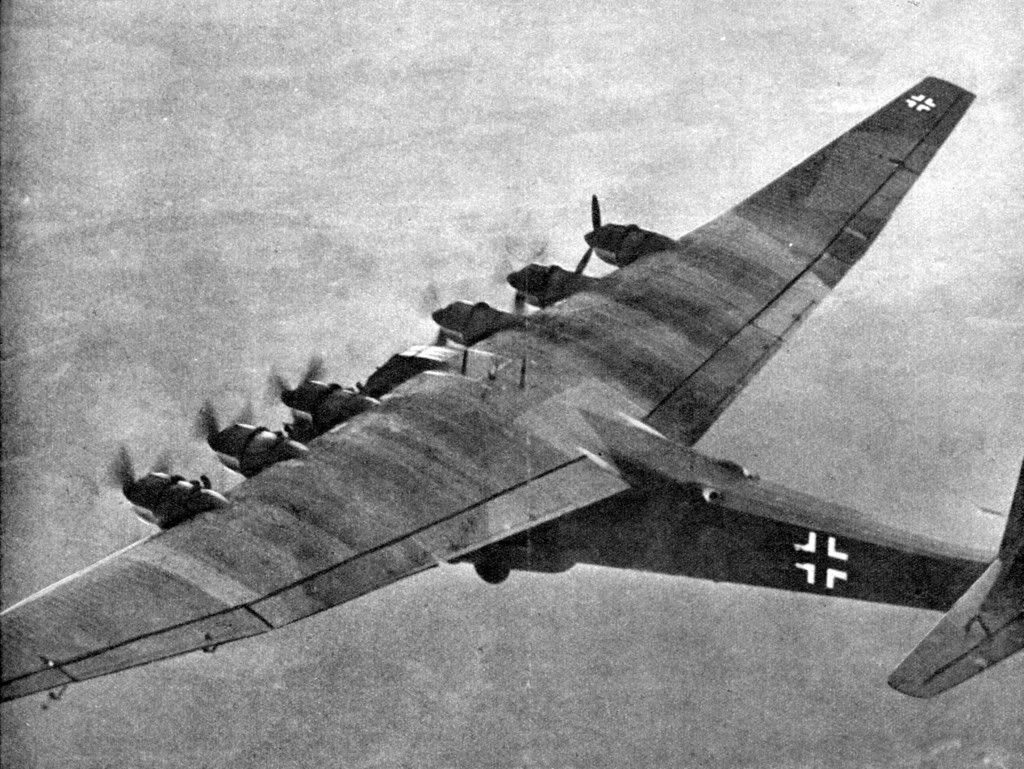
Me 323 in flight
Conceptual theorists of military power all seem to agree that concentration of ground forces should be used with maximum effect directed towards the so called decisive strategic point. However, for a nation that had widespread civil experience with air transportation and had pioneered the military application of airlift by ferrying General Francisco Franco’s Moroccan troops to Spain in 1936, Germany was strangely hesitant in the field of decisive strategic employment of the transport aviation. The standard Junkers Ju 52 transporter was obviously lacking ability for truly effective strategic reallocation of ground effectives, and its fleet not only was used for airlift but provided a substantial proportion of the aircraft employed in Luftwaffe training programs.
In operations that proceeded according to schedule, Luftwaffe air transport apparatus worked well, as was demonstrated in the employment of air-dropped and air-landed troops in Norway and the Netherlands in 1940 and in the capture of Crete in the spring of 1941, but it was evident that German air transport forces are completely inadequate for suitable strategic delivery of men, equipment and materials. With narrow, cramped fuselages, sloped steeply on the ground, as well as with a undersized side doors, existing transportation airplanes were limited to possible loads like troops, light infantry weapons, spare parts, ammunition and - with difficulty - fuel drums or motorcycles. Anything really heavy or bulky had to go by surface means – either on land or at sea. And that was completely unacceptable as a solution for strategically important, rapid operations like invasion of Great Britain. Preliminary studies showed that ability of transported assault troops for instantaneous employment of heavy armor, flak and other massive items with the very first airborne assault is the very crucial question of authoritative strategic success.
Although the Soviets had airlifted trucks and even light tanks by hanging them out in the slipstream underneath their heavy bombers, it was evident that truly effective haulage of heavy equipment requires capped aerial transporters of greater capability.
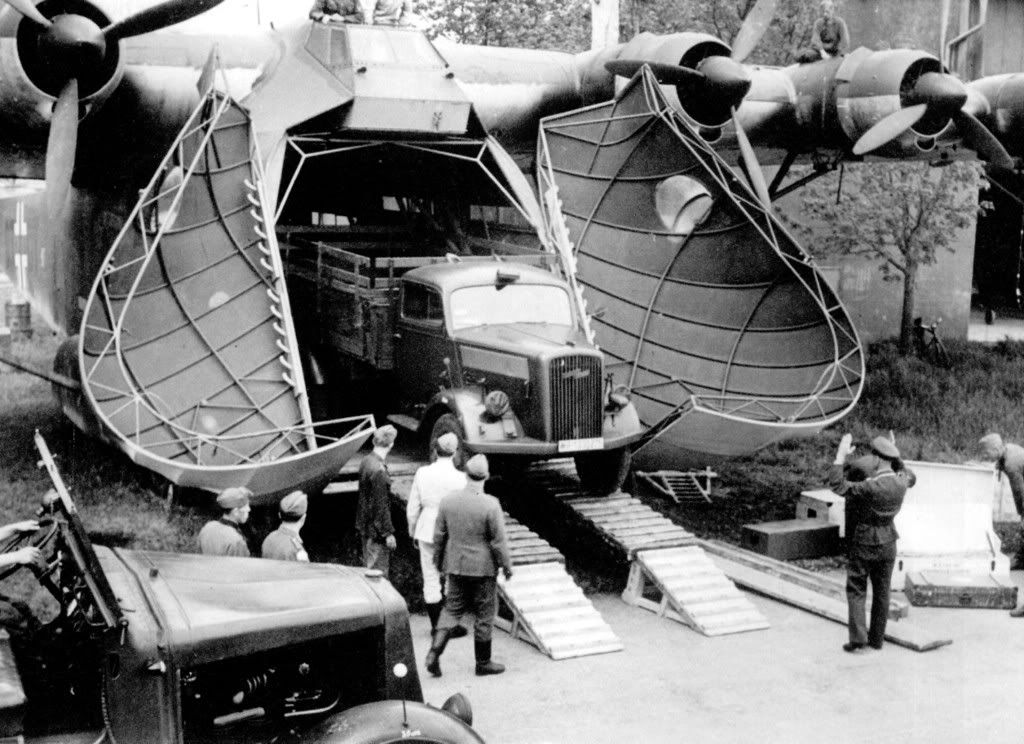
Me 323 is loading an Opel Blitz (Kfz.305) 3-ton lorry
Leading German construction bureaus Junkers and Messerschmitt therefore were asked to design and develop a very large transport gliders suitable for the delivery of both men and materials, with a highly demanding requirement toward constructions which ought to be able to carry either an 88-mm gun and half-track tractor, or a PzKpfw IV medium tank, or 120 completely equipped soldiers.
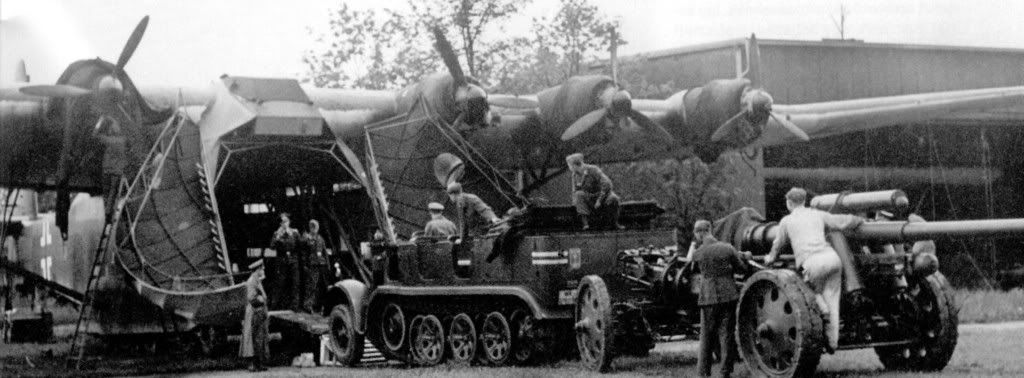
15 cm sFh 18 Immergrün Divisional heavy howitzer towed by Sd.Kfz 7 is entering the Me 323’s cargo compartment
Junkers company constructed the Ju 322 Mammut (Mammoth) glider capable to accommodate 100 fully equipped soldiers, but this construction when tested demonstrated unacceptable tendency toward longitudinal instability, so consequently it was cancelled by the [i]Reichsluftfahrtministeriurn[/]. On the other hand, Messerschmitt’s Me 321 was completely successful design with braced high-wing configuration structured by means of welded steel tubes, wood and fabric.
The pilot was located high atop the fuselage in a single-seat cockpit, adjacent to the wing’s leading edge. Access to the main cabin was via large clamshell doors in the nose or by doors on each side of the rear fuselage. Calculated payload was 22 tons.
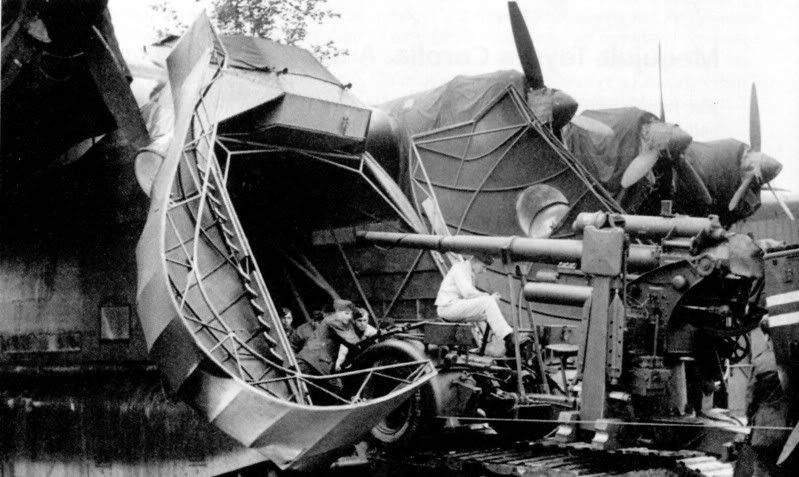
FLAK 18/36 entering the cargo compartment of the Me 323
Although Me 321 represented a completely functional transportation solution, it has been realized early in 1941 that motorized variant of the Me 321 is needed. It was observed that a huge glider that needed specific towing aircrafts, rocket packs and other highly specialized equipment was not the answer for effective full-autonomous application. Consequently, and after a large amount of tests, French built twin-row, radial, air-cooled Gnome-Rhone GR 14 N engines were applied as power sources for this new variant designated as Me 323 Gigant, because they already were in production, thus being capable to assure complete prevention of additional demands to German aircraft engine industry, already heavily encumbered with manufacturing engines for combat aircrafts. Additionally, these machines were easily boltable on the wings in nacelles of the same type as those designed for the French Bloch 175 bomber, which also needed to be strengthened. Small compartments for flight engineers were added in each wing between the inboard and centre engines too, although the pilot could override each engineer’s decision on engine and propeller control.
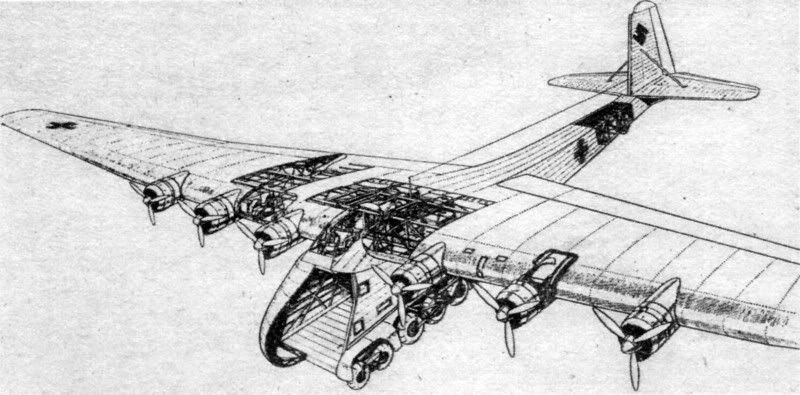
Me 323 cross-section
A brand-new permanent landing gear was bolted on to the side of each fuselage as well, which gave the superb rough-field performance to the airplane. Along each side existed a tandem-wheel front trucks and a main gear with three larger wheels. All wheels were sprung by massive levers and coil springs to keep the Me 323 level no matter what the load was on board on the roughest unprepared airstrips.
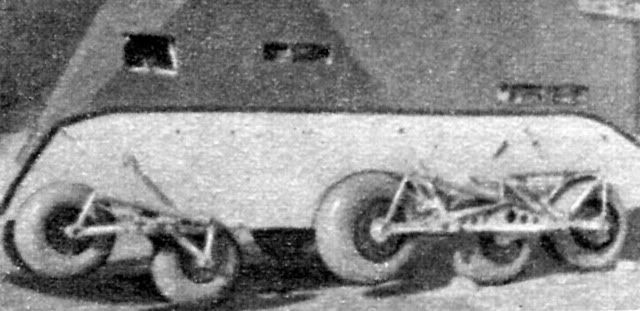
Me 323 Gigant main landing gear
Compared to the Me 321, the Me 323 had a significantly reduced payload of 12 tons, although its cargo compartment that was 3,35 m high, 3,13 m wide and 11 m long was specially built and reinforced like a railway platform, thus completely providing with its 100 m3 capacity an aerial equivalent of a standard German rail car.
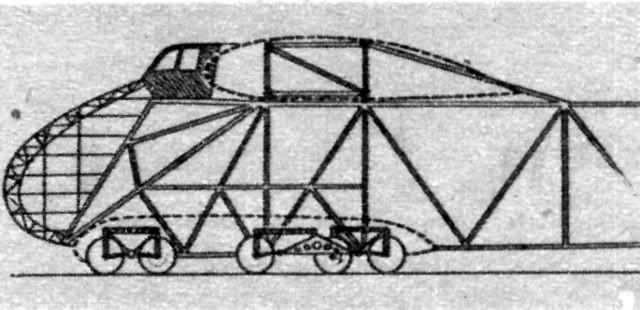
Fabric-covered steel tubing represented the basic structure of the airplane
If air superiority was assured these machines were capable to provide significant payload shipments in North Africa and Soviet Union. Although often derided as an “Scotch-tape bomber,” the Me 323 nevertheless remained a completely satisfactory cargo-plane, with a high loading capacity and easily and inexpensively repairable structure, being definitely one of the largest and most remarkable air vehicles in World War II.
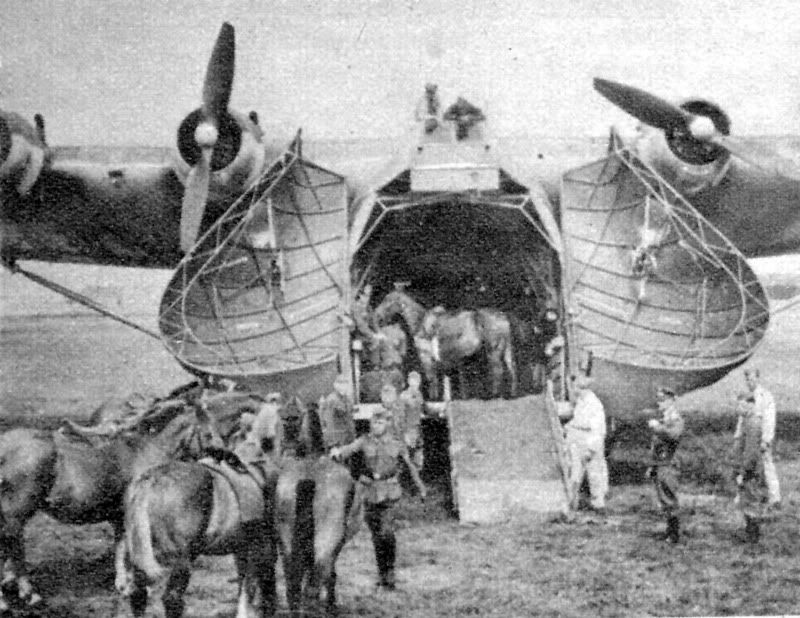
Hauling a cavalry squadron? No problem for the Me 323!
Well, that’s all for today honorable ladies and gentlemen. In the meantime, as always – all the best! 
Defensive armament (MG 131) in the Arado 232, there was also ports for MG-34 machinegunsin order taht the carried infantry could help to defend the aircraft. Note also the multiple wheels, the reason after its nickname “one thousand feet”

[b]
[/b]
[b]Hauling a cavalry squadron? No problem for the Me 323!
Well, that’s all for today honorable ladies and gentlemen. In the meantime, as always – all the best[/b]
Very nice, that picture seems to be one of the only Me-323V with 4 engines and two blade propellers.
Thank you my, dear Mr. Panzerknacker. I have noticed that one direct picture link is not working, but now it seems that aforesaid problem is fixed. And please, don’t worry - I am assuring you that overrepresented pictures are not the unaccompanied ones! 
Sure dont. I can see all your 8 photos about the Me-323. 

